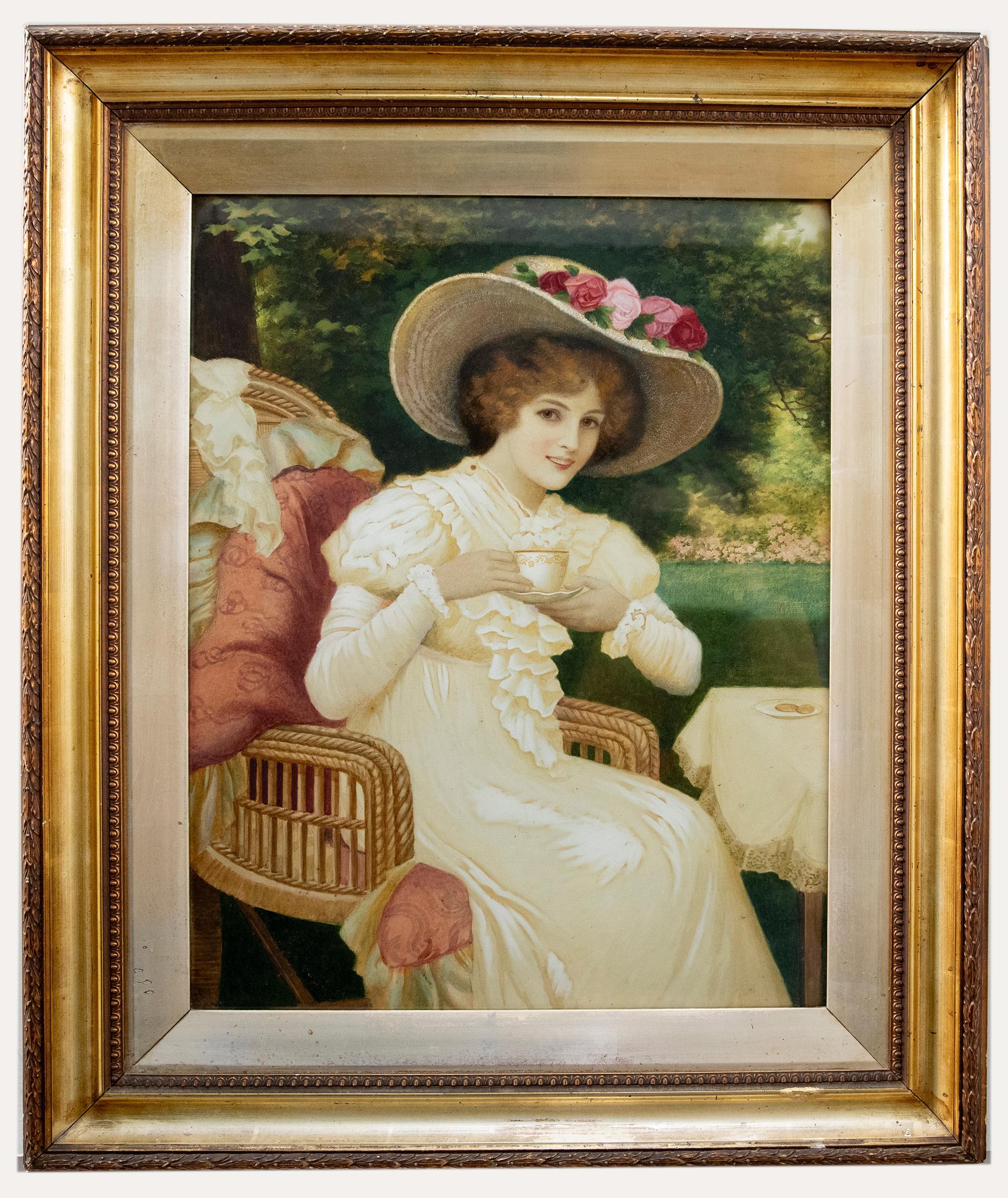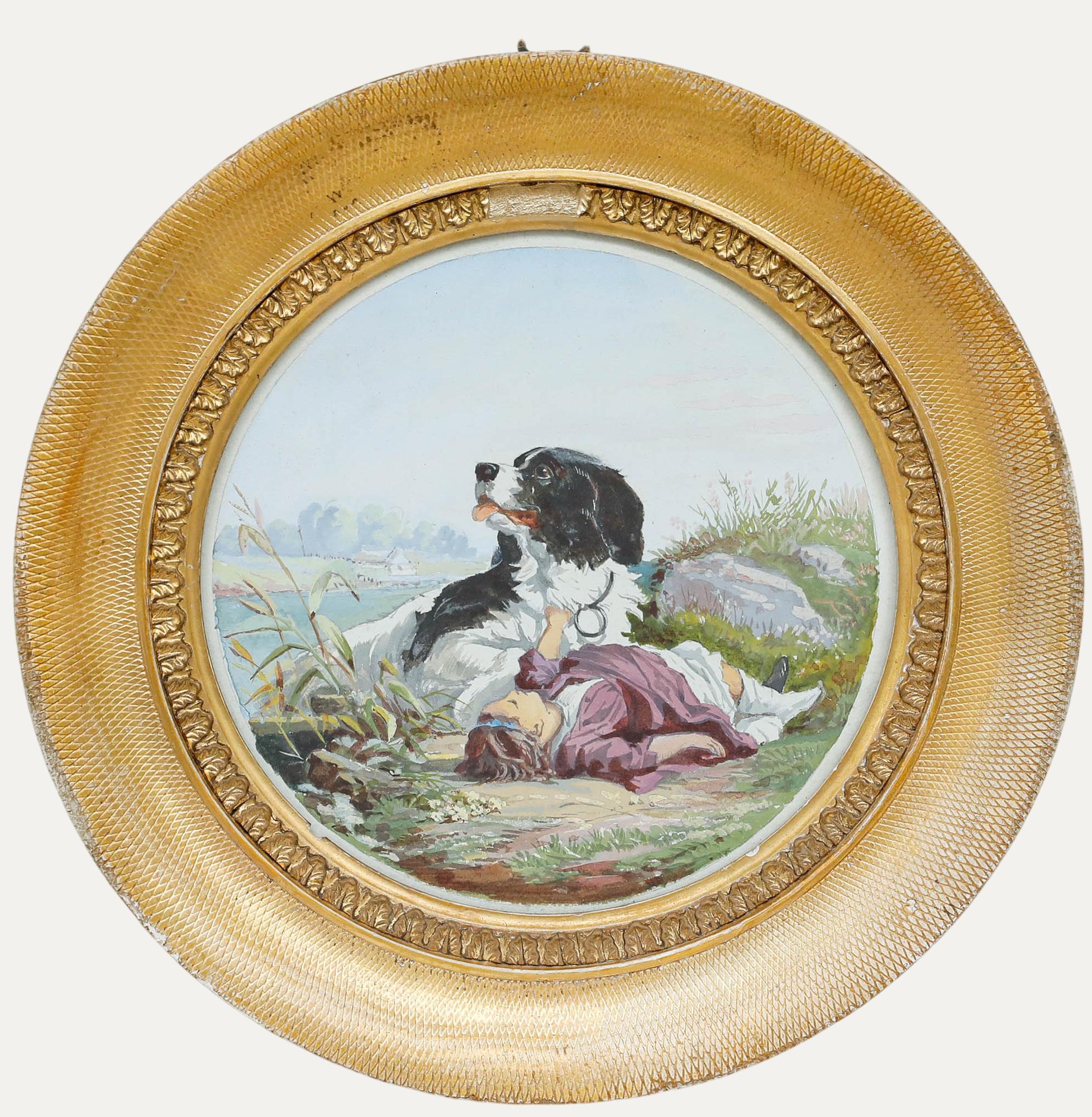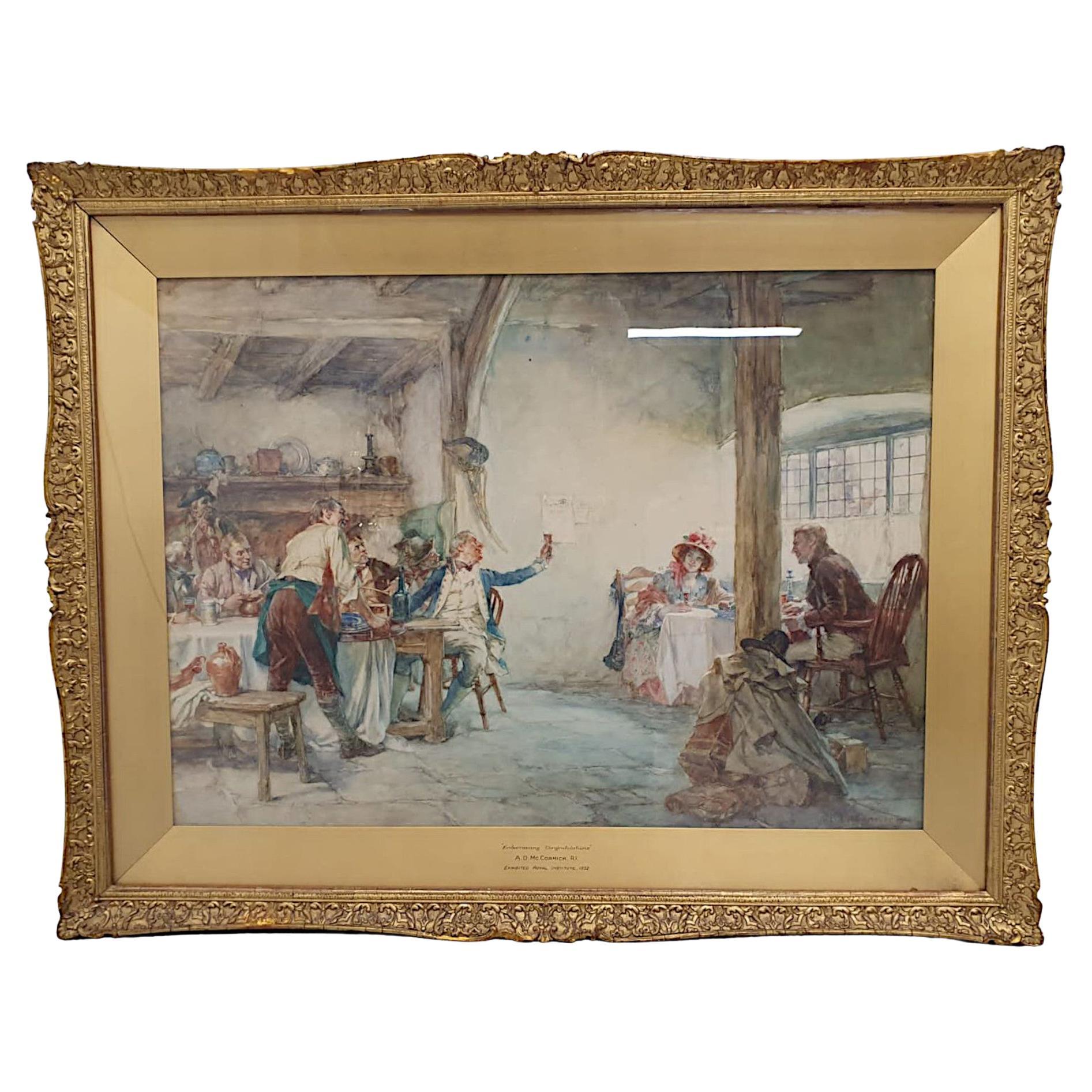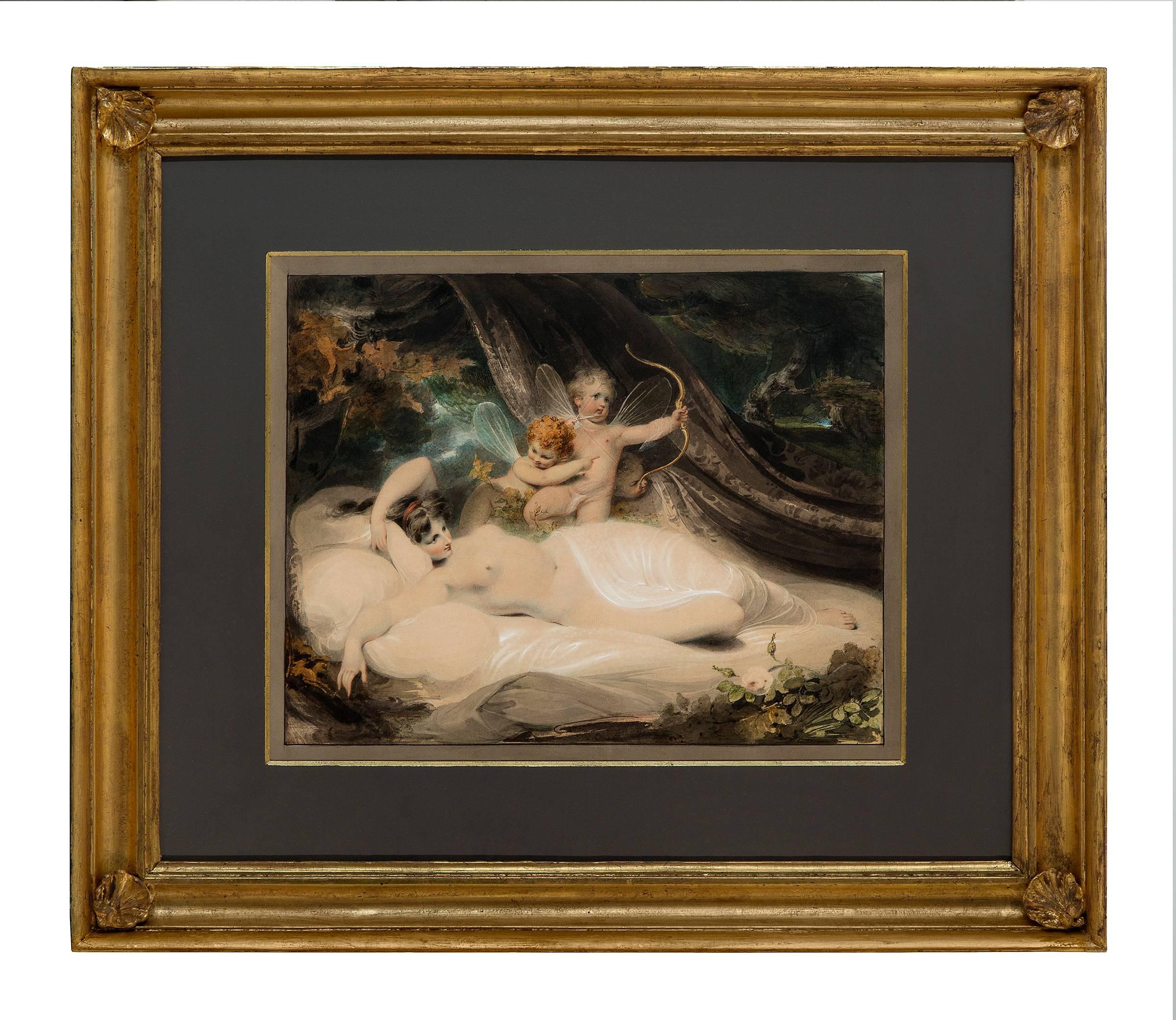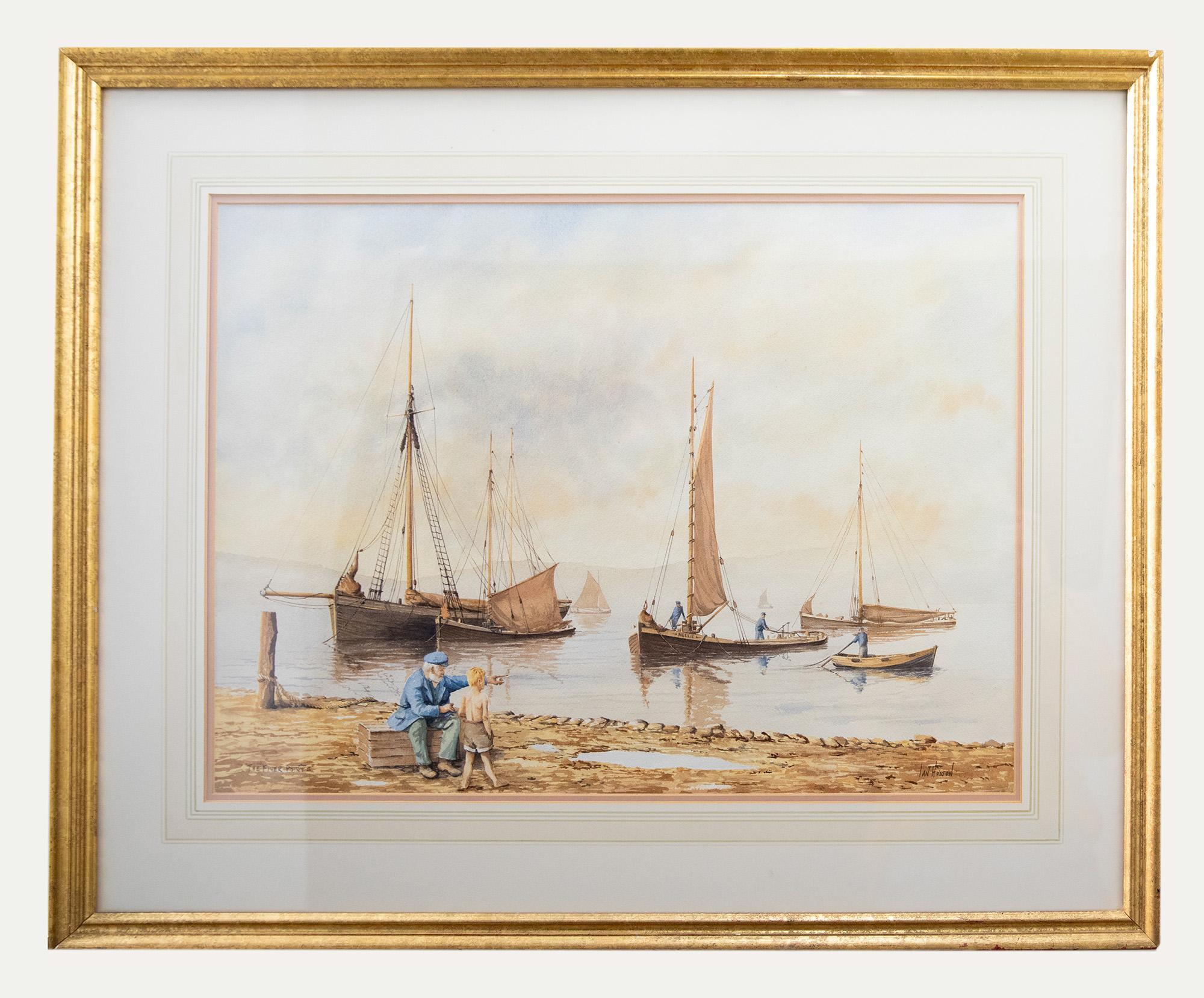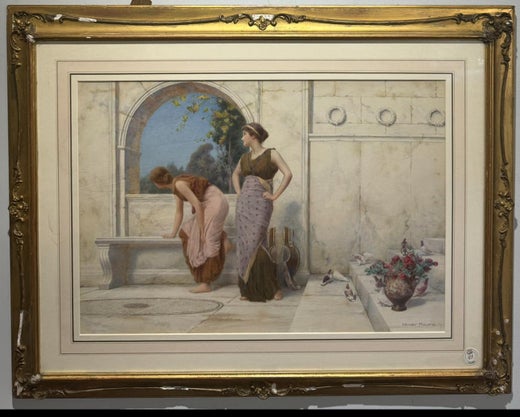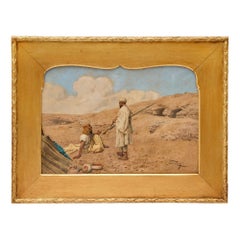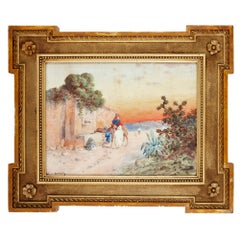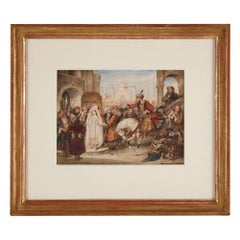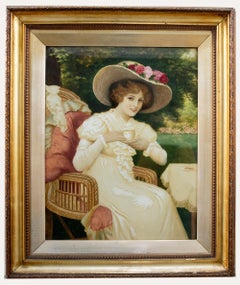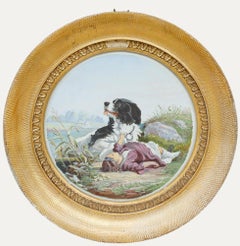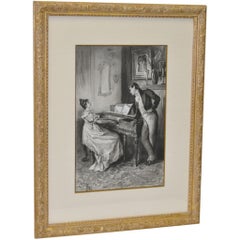Henry RylandWatercolour painting by Henry RylandEarly 20th Century
Early 20th Century
About the Item
- Creator:Henry Ryland (1856 - 1924, British)
- Creation Year:Early 20th Century
- Dimensions:Height: 24.81 in (63 cm)Width: 30.71 in (78 cm)Depth: 1.78 in (4.5 cm)
- Medium:
- Movement & Style:
- Period:
- Condition:
- Gallery Location:London, GB
- Reference Number:Seller: 75351stDibs: LU67435558671
Henry Ryland
Henry Ryland was a British painter, book illustrator, decorator and designer. Ryland celebrated in his day and since for his Neoclassical pictures. He was a contemporary of Lawrence Alma-Tadema and Frederic Leighton, among others and he shares stylistic and compositional traits with both artists. He painted beautiful women in classical settings, often on a promenade like this one. Unlike his contemporaries, however, Ryland worked almost exclusively in watercolor and this work is a particularly fine example of his style.
- ShippingRetrieving quote...Shipping from: London, United Kingdom
- Return Policy
More From This Seller
View AllLate 19th Century Figurative Paintings
Canvas, Oil
Late 19th Century Figurative Paintings
Paper, Watercolor
Late 19th Century Landscape Paintings
Watercolor
19th Century Figurative Paintings
Wood, Paper, Watercolor
Late 19th Century Naturalistic Figurative Paintings
Paper, Watercolor, Board
1910s Figurative Paintings
Canvas, Oil
You May Also Like
20th Century Portrait Drawings and Watercolors
Watercolor
20th Century Figurative Drawings and Watercolors
Watercolor
Early 20th Century Interior Paintings
Watercolor
Early 20th Century Irish Paintings
Canvas, Giltwood, Paint
1790s Romantic Figurative Drawings and Watercolors
Watercolor, Pencil
21st Century and Contemporary Figurative Drawings and Watercolors
Watercolor
Read More
Exquisite Sèvres Porcelain Brings More to the Table than Dishes
The elegant ceramics represent the best of French artistry and innovation.
What Is Ormolu, and Why Are We Talking about It?
This golden material glamorized neoclassical furnishings and transformed upper-crust sitting rooms from France to Philadelphia in the 18th and early 19th centuries.
